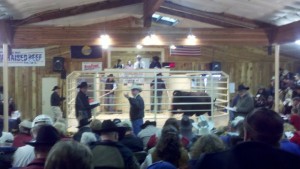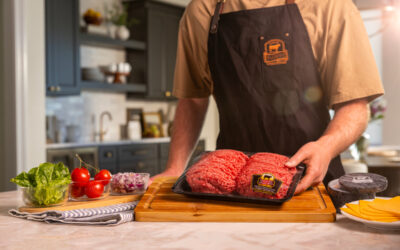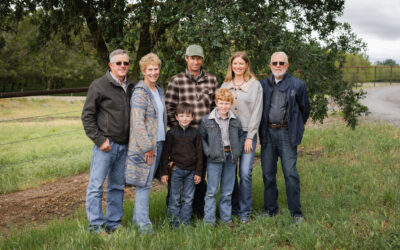
Bull buying made simple

We get it. That’s why we asked Mark for his top tips for bull buying. Here’s what he had to say:
Consider your females.
Will these bulls be used on heifers or mature cows? If the bull is going to be used heavily on heifers, more importance should be put on calving ease. That’s a priority, where it might not be at the top of the list if you’re breeding him solely to older cows.
He encourages cattlemen to consider the Calving Ease Direct (CED) EPD as much as the Birth Weight (BW) EPD because “it truly is a better indicator of the trait” they are trying to achieve.
“Calving ease takes into account birth weight, but it also accounts for things like gestation length,” Mark says.
Data is good, but EPDs are better.

“Too many times,” he says, “an auctioneer will call out, ‘This bull has a 78-pound birth weight. Until I know what the EPD is, I couldn’t care less about his actual birth weight.”
While actual data — whether it’s a birth weight, an ultrasound scan or genomic results — is one piece of the puzzle, its usefulness can’t compare to EPDs.
“Those EPDs have all of that information in there,” Mark says. “Use them — they work.”
Think of the calves.
Of course, in any production management decision, the desired final product should be considered. What’s the hope or your plan for these calves?
Will they be replacement heifers, or go to the feedlot? If it’s a combination of the 2, Mark says the producer should take a balance trait approach and look at both maternal and carcass traits.
Even for cattlemen who sell their entire calf crop at weaning, it’s important to look beyond that point.
“They need to be paying attention to carcass traits because I can guarantee you the buyers of those calves are paying attention. Feedlots today know who’s producing those better calves and who’s producing the not-so-good ones. So it really makes good sense for the cow-calf guy to be paying attention, too,” he says.
That’s why Mark is a firm believer in the dollar-value ($Value) tools, multi-trait selection indexes expressed in dollars per head that assist beef producers by adding simplicity to genetic selection decisions. The $Value is an estimate of how future progeny of each sire are expected to perform, on average, compared to progeny of other sires in the database if the sires were randomly mated to cows and if calves were exposed to the same environment.
He thinks the Weaned Calf Value ($W) and the Beef Value ($B) are especially significant to cattlemen. The first is a maternal index that takes into account birth weight, weaning weight, milk and mature cow size. The second represents the feedlot and carcass value of the potential bull.
Numbers aren’t everything.
While EPDs are one of the most valuable tools at a cattleman’s disposal,Mark urges producers not to forget the big picture.
“You’ve still got to go look at that bull,” he says. “Make sure you are comfortable with his structure, his disposition and how well he’ll fit into your environment and operation.
“The numbers, while they’re great, still don’t take into account some of these other traits that you need to be out there in the pen doing your own evaluation on.”
Want to read more about specific EPD recommendations for cow-calf producers who want to more effectively target the CAB brand? Check out our Best Practices Manual.
You may also like
Success, Despite Challenges
Today’s market is complex and competitive. The collective effort of stakeholders across the supply chain positions Certified Angus Beef to meet the record demand for premium beef moving forward. Signals across the beef industry are clear and Angus farmers and ranchers seeking high-quality genetics that deliver premium beef are producing a product in high demand.
Legacy in the Golden Land
On a quiet stretch of Northern California rangeland, a different story unfolds. The Borror family’s legacy modestly speaks through the cattle they raise, the ground they steward. The generations who’ve made a life here demonstrate commitment to doing things right, even when no one is watching.
CAB Sets Sales Records, Sees Historically High Brand Acceptance Rates
In an otherwise tough time in the beef business, sales and supply records have been a bright spot. The positive numbers mean that quality beef production has not let up, and beef demand is holding. Consumers have proven the value proposition: the good stuff is worth a little more money, for a better eating experience.



